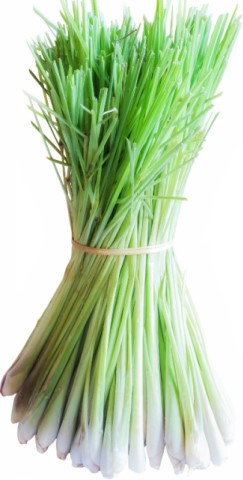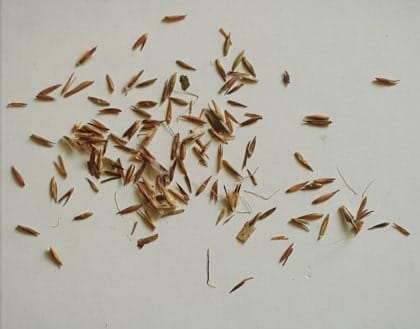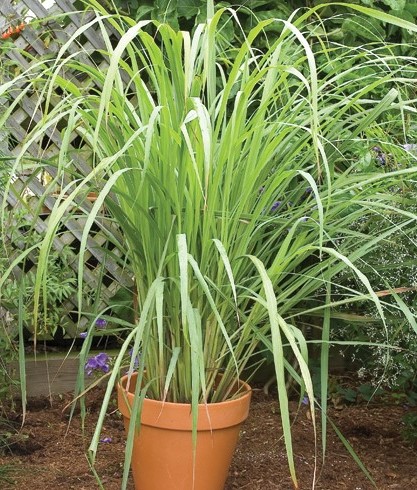Lemongrass Cultivation Guide:
Introduction of Lemongrass Cultivation:- Well, what is lemongrass? It is an aromatic and medicinal grass type plant grown in parts of tropical and sub-tropical regions of South East Asia, Africa and other parts of world. Commercial farming of lemon grass is growing day by day as the aromatic product demand. Lemongrass is widely used as a culinary herb in Asian cuisines and also as medicinal herb in India. When it comes to Indian continent, lemongrass is mainly grown in Western Ghats of India. Basically lemongrass is native to Southeast Asia. When it comes to botanical description of lemon grass, it is a tall and the culm is stout, erect up to 2 meter high. Lemongrass leaves are long, green, linear tapering upwards and along the margins. Why commercial cultivation of lemon grass is so important, because of its economic value. The oil is extracted / distilled from lemon grass leaves and flowering tops has excellent health benefits. The lemongrass oil smells like lemon refreshing odour because of high percentage citral in the oil. Lemongrass oil can be used in perfumes, soaps manufacturing, detergents, cosmetics, beverages and insect repellents. The lemongrass leaves may be used in tea preparation as well to give refreshing touch. It is very easy to grow and maintain the lemongrass due to less attacking pests and diseases. One can obtain ultimate profits in lemongrass production with proper crop management practices and marketing plan. Lemongrass can be grown in backyards, pots, on terrace as this works as an excellent insect repellent.
Scientific Name or Botanical Name of Lemongrass:- Cymbopogon flexuosus.
Genus of Lemongrass:- Cymbopogon.
Family Name of Lemongrass:- Gramineae.
Common Names of Lemongrass:- Lemon grass, lemongrass, barbed wire grass, silky heads, citronella grass, cha de Dartigalongue, fever grass, tanglad, hierba Luisa, or gavati chaha
Lemongrass Names in Other Parts of World:- Citroengras (Dutch), Zitronengras(German), Palczatka cytrynowa (Polish),Harilik sidrunhein (Estonian), ตะไคร้ (Thai), Erva príncipe (Portuguese), Tanglad (Filipino), 레몬그라스 (Korean), Zacate de limón (Lemon), Limon otu (Turkish), Chi Sả (Vietnamese), සේර (Sinhalese), Verveine des Indes (French), Citronzāles ( Latvian), Remongurasu (Japan), Citrongräs (Swedish), Serai (Malay), Citromfű (Hungarian), Cimbopogone (Italian), Voňatka citronová (Czech), Λεμονόχορτο (Greek), Harilik sidrunhein (Estonian), 檸檬香茅 (Chinese), Citronella (Romanian), and Limonis balakhis (Georgian).
Lemongrass Names in India:- Lemon grass / Chaipatt (Hindi), Nimbe hullu (Kannada), Nimma Gaddi (Telugu), Elumichai-Ennai Pullu / Karpura Pullu / Vasanai Pullu (Tamil), Inchi Pullu / Vasana Pullu / Sugandha Bhoothrana / Thakra Thuni (Malayalam), Lilly-Chaya (Gujarati), Chahaveche Than (Konkani), Sugandhichaha; Bhustrima (Marathi), and Gandha Bena (Bengali).
Health Benefits of Lemongrass:- The following are some of the health benefits of Lemongrass and its oil.

- Lemongrass promotes healthy digestion.
- Lemongrass controls Cholesterol levels.
- Lemongrass has antiseptic properties which is good for treating infections.
- Lemongrass cleanses and detoxifies the body.
- Lemongrass heals colds, flu and fever.
- Lemongrass boosts the immune system.
- Lemongrass is beneficial in treating Type-2 diabetes.
- Lemongrass aids in calming the muscles and nerves which helps in inducing deep sleep.
- Lemongrass fights Cancer.
- Lemongrass reduces Arthritis pain.
- Lemongrass is good for skin health and cellular health.
- Lemongrass works as a good insect repellent agent.
Cultivars (Varieties) of Lemongrass:- There are many varieties of lemongrass grown throughout the world. It is recommended to find out best cultivar that suits to your region and yields more oil. Some of the famous improved varieties grown in India are; OD-19,SD-68,OD-408, RRL-16,RRL-39, Pragathi, Praman, CKP-25, Krishna and Cauvery.
Climate Requirement for Lemongrass Cultivation:- Lemongrass is a hardy crop can be grown in tropical and subtropical climatic conditions at an elevation up to 1100 meters. (Above mean sea level). The best suitable climate for growing lemongrass is warm and humid with plenty of sunshine. Evenly distributed rainfall of 300 to 350 cm is best for crop growth and good yield. For better crop yield and good oil content, it requires a temperature ranging from 20-35 C. However, lemongrass can also be grown in semi-arid regions having low to moderate annual rainfall.
Soil Requirement for Lemongrass Cultivation:- a Lemongrass crop thrives well in sandy loam soil with good organic matter. The soil pH ranging from 5.0-7.0 is ideal for its growth. However, this even can be grown in poor soils in the hill slopes.
Propagation and Seed Rate in Lemongrass Cultivation:- Propagation of Lemongrass crop is done by seeds raised in nurseries. The transplanting of nursery raised seedlings is found to be superior when compared to direct sowing of seeds in the field. Usually 3 to 4 kg of seed produces enough seedlings to cover 1 ha land. However, seed rate depends on the cultivation methods followed, soil type and cultivar.

Nursery Raising in Lemongrass Cultivation:- Form the raised seedbed with well pulverized soil and make sure to add well-decomposed farm yard manure, leaf mould to the soil while forming the seedbed. Lemongrass seeds should be sown in lines in raised beds at 10 cm interval and covered with any grass. When seeds germinate and become 8 weeks old or attain the height of 12 to 16 cm, transplant the seedlings to the main field.
Land Preparation in Lemongrass Cultivation:- The land should be cleared of the underground vegetation/weeds/dead leaves/previous crop residues and pits of 5 cm x 5 cm x 5 cm should be made at a spacing of 15 cm x 10 cm.
Season for Lemongrass Planting:- This crop may be grown throughout the year provided there is sufficient irrigation and sunshine.
Planting and Spacing in Lemongrass Cultivation:- Seedlings of lemongrass should be planted at a distance of 40×40 cm, 40×30 cm, and 40×60 cm apart depending upon soil fertility and inter-culture methods being used. It is recommended to plant on ridges in regions where high annual rainfall is expected. In case of rooted slips 1 or 2 slips should be placed into each hole, about 15 cm deep.
Irrigation in Lemongrass Cultivation:- The frequency of irrigation depends on soil moisture holding capacity and the season. Provide immediate irrigation after transplanting in the field. No requirement of irrigation in rainy season. However, 4-6 irrigations should be carried during summer months. If rains are erratic, the field should be irrigated at an interval of 3 days during the first month and 7-8 day intervals subsequently.
Manures and Fertilizers in Lemongrass Cultivation:- Supplement the soil with Well-decomposed farmyard manure like cow dung or organic compost. It is good enough to carry 25 tonnes/ha as basal application. When it comes to N:P:K application, 30 kg of ‘N’, 30 kg of ‘P’ and 30 kg of ‘K’ is recommended basal application per hectare at the time of planting. Remaining nitrogen (70 to 90 kg) may be applied as top-dressing in 3 or 4 split doses during the growing season of the crop. In case of poor soils having low fertility should be supplemented with increased dose of nitrogen. In case of Zinc deficient soils, 40 to 60 kg Zinc sulphate should be applied in 1 hectare field.

Intercultural Operations in Lemongrass Cultivation:- The field should be kept weed free during initial 3 to 4 months after planting the material. It is advised to carryout weeding plus hoeing up to one month, after every harvest of the crop. It is recommended to perform weeding operation 2 to 3 times a year. In case of row plantation, a tractor-drawn cultivator or hand-hoe may be used for intercultural operation in the field. Distillation waste of this crop may be applied as organic mulch @ 3 to 3.5 tonnes/ha which found to be effective for controlling weeds. Apart from this, herbicides like Diuron @ 1.5 kg ai/ha may be used for effective weed control.
Pests and Diseases in Lemongrass Cultivation:- Pest and disease control in Lemongrass plantation is very important for higher yields, quality seeds and oil.
- Pests: Stem Boring Caterpillar and Nematodes are the common insect-pests found in lemongrass cultivation.
- Control Measures: Contact your horticulture department for symptoms of these pests and their control measures.
- Diseases: Red Leaf Spot, Leaf Blight and Little Leaf or Grassy Shoot are the common diseases found in lemongrass cultivation.
- Control Measures: Contact your horticulture department for symptoms of these diseases and their control measures.
Note: Your local Agriculture department or Horticulture is a good source for finding suitable solutions for controlling pests and diseases in Lemongrass Cultivation.
Harvesting in Lemongrass Cultivation:- Lemongrass will be ready for harvesting in 90 days after planting, thereafter 60-65 days interval. The grass should be cut leaving 10-15 cm above the ground level. One can take 5 to 6 cuttings in a year subject to the weather conditions. Oil from lemon grass is extracted either by water or steam distillation method. Usually oil recovery is about 0.2-0.3 %.
Yield in Lemongrass Cultivation:- Yield of the crop depends on many factors such as soil type, cultivar (variety), irrigation (water availability), crop age, and crop management practices. Under ideal conditions, on an average one can obtain the yield as below.
- Herbage : 20-30 tonnes/ha.
- Oil:
- During first year : 25 kg/ha.
- Second year onwards : 75-100 kg/ha.
Note: The lemongrass crop can be retained in the field for 6 years.
Marketing of Lemongrass:- If the lemongrass is grown on large scale, it is advised to have a proper marketing approach. Contact local herbal companies, or oil seed companies for bulk purchase.

Very relevant information on Lemon grass. I will be glad to be connected to producers in large quantities for my business. Thank you.
We can supply lemongrass yo in bulk quantity.
Please feel free to contact me based on your requirement. I am from Nashik.
BUYER OF BULK LEMONGRASS LOOKING FOR SUPPLIERS OF LEMONGRASS
Dear Mr. Husain,
Could you please give me your address and mobile number? My Mumbai mobile is 9167621773. We need lemongrass in bulk (10 tons per month) for our lemongrass oil extraction factory. Please contact me soon.
Thanks & Regards,
Vijay Atawane
Hi,
We are producing lemongrass about 100hactors in Tanzania East Africa.
You can contact us for the best price and quality.